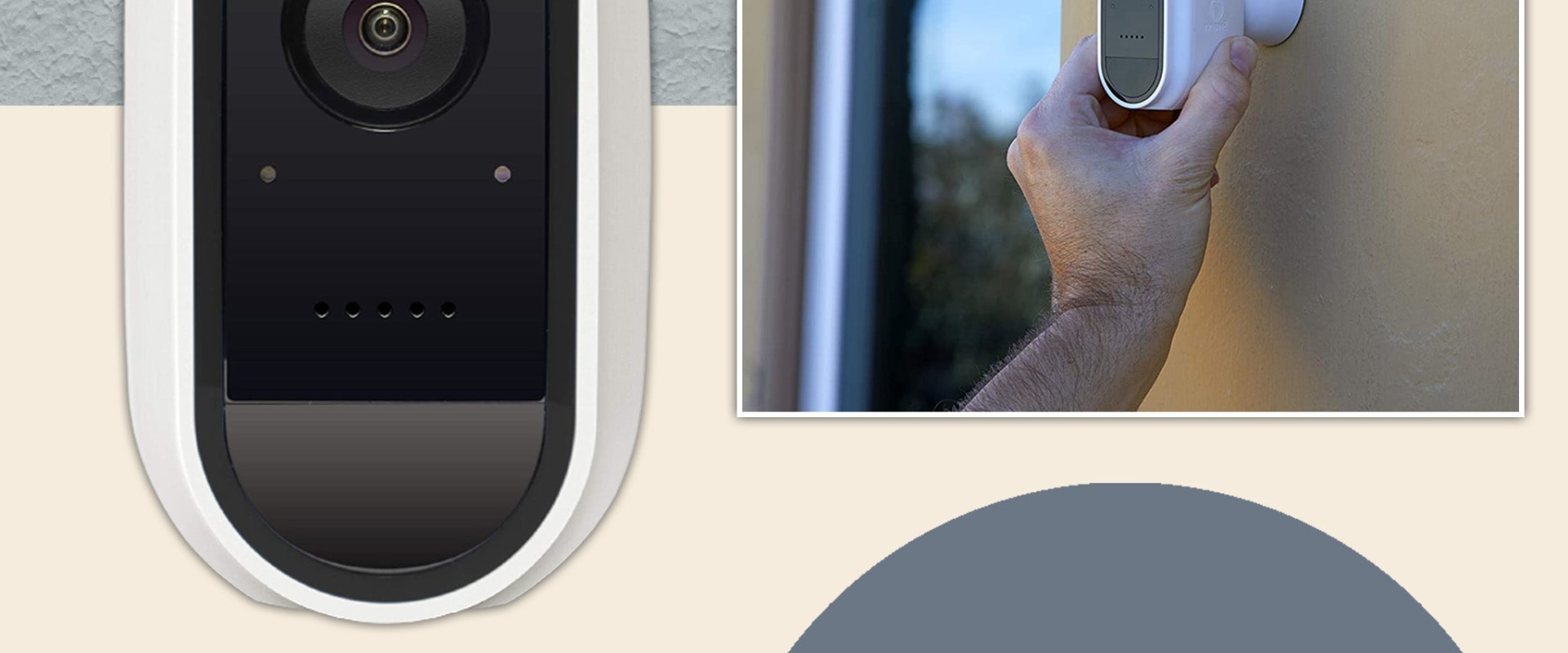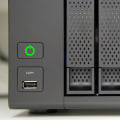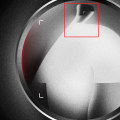Thermal cameras have become an essential tool for both home and business security. These advanced cameras use cutting-edge technology to provide a level of protection that traditional cameras cannot match. Whether you want to secure your property or keep an eye on your business, thermal cameras offer a unique and effective solution. In this article, we will delve into the world of thermal cameras and how they can help protect your home and business.
We will explore the different types of thermal cameras, their benefits, and why they are a crucial addition to your outdoor security system. So, sit back, relax, and let us take you on a journey through the world of thermal cameras. When it comes to protecting your home or business, security cameras are an essential tool. And with the advancement of technology, thermal cameras have become an increasingly popular option for many. But what exactly are thermal cameras and how can they benefit you? In this article, we will cover all you need to know about thermal cameras and how they can help keep your property safe. Thermal cameras, also known as infrared cameras, are a type of surveillance camera that uses thermal imaging technology to capture images.
Unlike traditional cameras that use visible light, thermal cameras detect heat signatures emitted by objects and display them as images. This allows for a more accurate detection of potential threats, even in low light or complete darkness. One of the main features of thermal cameras is their ability to detect and track movement based on heat signatures. This makes them ideal for use in areas with poor lighting conditions or where traditional cameras may not be effective. They can also be used to detect intruders or animals that may be trying to enter your property. Another advantage of thermal cameras is their ability to provide a clear image regardless of weather conditions.
Unlike traditional cameras, which can be affected by rain, fog, or snow, thermal cameras can still capture accurate images in these situations. This makes them a reliable option for outdoor surveillance, especially in areas with harsh weather. However, one of the downsides of thermal cameras is their higher cost compared to traditional cameras. This is due to the advanced technology used in these cameras. Additionally, thermal cameras may not be as effective in detecting smaller objects or details compared to traditional cameras. When it comes to choosing a thermal camera for security purposes, there are different options available for both outdoor and indoor use.
For outdoor surveillance, it is important to choose a camera with a durable and weatherproof design. Some recommended options include the FLIR TCX PTZ Camera and the Hikvision Thermal Bullet Camera. For indoor use, a more compact and discreet option may be preferred. The FLIR FC-Series ID Camera and the Axis Q2901-E Thermal Network Camera are both great choices for indoor surveillance. In conclusion, thermal cameras offer advanced technology for enhanced security and surveillance. They are able to detect heat signatures, provide clear images in various weather conditions, and track movement accurately.
However, they may come at a higher cost and may not be as effective for smaller details. When choosing a thermal camera, consider your specific needs and location to determine the best option for your property.
Understanding Thermal Cameras
Thermal cameras, also known as infrared cameras, use heat signatures to detect objects and people. Unlike traditional security cameras that rely on visible light, thermal cameras can detect heat radiation, making them ideal for use in low light or no light situations. But what sets thermal cameras apart from other security cameras? For one, thermal cameras are not affected by lighting conditions. They can produce clear images even in complete darkness or foggy conditions.This makes them an excellent choice for outdoor surveillance, especially in areas with limited visibility. Additionally, thermal cameras do not require any additional lighting sources, which can save on energy costs and installation time. They are also less prone to false alarms caused by shadows or moving objects. Another advantage of thermal cameras is their ability to detect heat signatures through walls and other obstructions. This makes them an effective tool for perimeter security, allowing you to monitor your property from a distance. In summary, thermal cameras offer a more reliable and versatile option for surveillance compared to traditional security cameras. Their ability to detect heat signatures in any lighting condition and through obstacles makes them an essential tool in protecting your home or business.
How Do Thermal Cameras Work?
Thermal cameras work by detecting and measuring the heat emitted from objects.This technology is based on the principle of thermal imaging, which uses infrared radiation to create images based on temperature differences. Unlike traditional cameras that rely on visible light, thermal cameras can capture images in complete darkness, through smoke, and even in adverse weather conditions. This makes them an ideal choice for outdoor security cameras. The key component of a thermal camera is the microbolometer, a tiny sensor that converts infrared radiation into electrical signals. These signals are then processed by the camera's software, which creates a color-coded image representing the varying levels of heat detected. Thermal cameras can detect heat signatures from as far as several hundred feet away, making them an effective tool for monitoring large areas. They can also detect minute changes in temperature, allowing them to pick up on even the slightest movements. Additionally, thermal cameras do not require any additional lighting to capture images, making them less noticeable and less prone to tampering.
This makes them a popular choice for covert surveillance. Overall, the advanced technology behind thermal cameras makes them a powerful tool for protecting your home or business. With their ability to detect and capture heat signatures, they provide an extra layer of security and peace of mind for property owners.
Types of Thermal Cameras
When it comes to security cameras, there are many options to choose from. One type that has gained popularity in recent years is thermal cameras. These cameras use infrared technology to detect heat signatures and produce images based on the temperature differences of objects.This makes them particularly useful for detecting movement and identifying potential threats. There are two main types of thermal cameras: outdoor and indoor. Each has its own set of benefits and choosing the right one depends on your specific needs and environment.
Outdoor Thermal Cameras
Outdoor thermal cameras are designed to withstand harsh weather conditions and provide clear images even in low light or complete darkness. They are typically used for perimeter surveillance, as they can detect heat signatures from a distance and can cover a larger area compared to traditional security cameras. These cameras are also ideal for outdoor areas where traditional lighting may not be possible or practical.Indoor Thermal Cameras
Indoor thermal cameras are best suited for monitoring indoor spaces such as warehouses, factories, or offices.They can be used in conjunction with traditional security cameras for added protection, as they can detect heat signatures that may not be visible to the naked eye. This can be especially useful in detecting potential fire hazards or identifying intruders in dark or poorly lit areas. When deciding between an outdoor or indoor thermal camera, it is important to consider factors such as the location, purpose, and budget. Both types of cameras have their own advantages and can provide valuable insights for protecting your property.
Top Recommendations for Thermal Cameras
When it comes to keeping your home or business safe, thermal cameras are an excellent option. These advanced devices use infrared technology to detect heat signatures and provide clear images, even in low-light or no-light conditions.If you're considering investing in thermal cameras, here are our top picks for the best ones on the market. First on our list is the FLIR C3 Compact Thermal Camera. This compact and easy-to-use camera offers a high-resolution thermal image and built-in Wi-Fi connectivity for easy data transfer. It's also equipped with FLIR's patented MSX technology, which provides enhanced image clarity and detail. Next up is the Seek Thermal CompactXR Extended Range Camera. This budget-friendly option packs a punch with its long-range detection capabilities and high-resolution thermal imaging.
It can also be easily attached to your smartphone for convenient viewing and sharing of images. If you're looking for a more professional-grade thermal camera, the FLIR E8 Compact Thermal Imaging Camera is a great choice. With its 320 x 240 pixel resolution and advanced features like multiple measurement modes and picture-in-picture capability, this camera is a top performer in the industry. Lastly, we recommend the Hikvision DS-2TD2636B-15/P Thermal & Optical Bi-spectrum Network Bullet Camera. This powerful camera offers both thermal and optical imaging, making it perfect for use in both day and night conditions. It also has advanced features such as temperature measurement and fire detection, making it ideal for industrial or commercial settings. No matter which thermal camera you choose, these top recommendations are sure to provide you with the best in security and peace of mind.
Benefits and Limitations of Using Thermal Cameras
When it comes to protecting your home or business, security cameras are an essential tool.But what exactly are thermal cameras and how can they benefit you? In this article, we will cover all you need to know about thermal cameras and how they can help keep your property safe. Thermal cameras, also known as infrared cameras, use heat detection technology to create images. These images allow for easy identification of any potential threats or intruders, even in low light or complete darkness. This is a significant advantage over traditional security cameras, which may struggle to capture clear images in these conditions. Another benefit of thermal cameras is their ability to detect motion and temperature changes. This means that they can detect movement, even if the intruder is camouflaged or hiding behind objects.
It also allows for more accurate and immediate detection of potential fires or overheating equipment, providing an added layer of protection for your property. However, like any technology, there are also limitations to using thermal cameras for security. One major disadvantage is their high cost compared to traditional security cameras. Thermal cameras are more complex and require specialized equipment, making them a significant investment for most homeowners or small businesses. Additionally, thermal cameras may not be suitable for all environments. Extreme weather conditions, such as heavy rain or fog, can affect the camera's ability to capture clear images.
They also struggle to detect humans through glass or other reflective surfaces. In conclusion, thermal cameras offer many benefits for security purposes, including their ability to detect heat and motion in low light conditions. However, their high cost and limitations in certain environments may make them a less practical option for some individuals or businesses. It is essential to consider your specific needs and budget before investing in thermal cameras for your property's security. Thermal cameras offer advanced technology that can greatly enhance your home or business security. From their unique ability to detect heat signatures to their durability in harsh weather conditions, thermal cameras are a top choice for many property owners.
We hope this article has provided valuable information to help you make an informed decision about using thermal cameras for your security needs.







